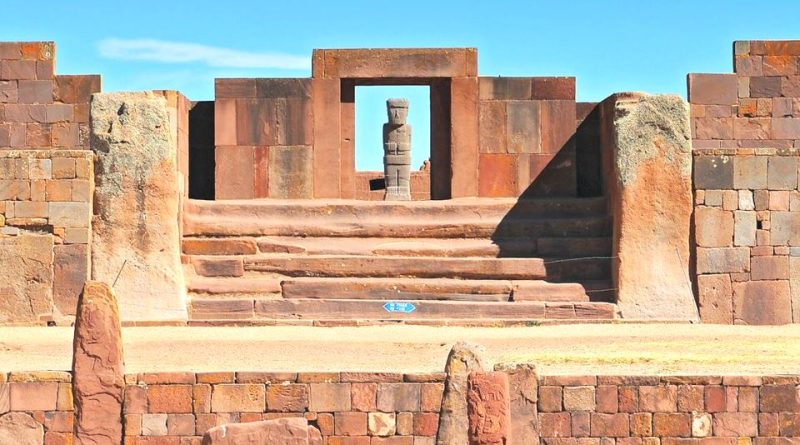The Tiahuanacos and agriculture
The Tiahuanacos and agriculture
The ancient Tiwanaku civilization represented one of the most important and advanced cultures of pre-Columbian America. Tiahuanaco, or Tiwanaku, was its main urban center, and the most famous archaeological site associated with this civilization is located in the region of present-day Bolivia, near Lake Titicaca. The history of Tiahuanaco and the Tiwanaku civilization can be divided into three main periods:
1. Formative Period (around 1500 BC – 500 AD):
During this period, the Tiwanaku civilization was emerging in the Andean plateau region, between Peru and Bolivia. Tiahuanaco was founded as a small agricultural settlement around 1500 BC. During the first millennium BC, the Tiwanaku culture began to develop and grow, creating a series of settlements, irrigation canals, and architectural structures. The Tiwanaku culture had an economy based primarily on agriculture, with crops such as quinoa and the potato, but was also known for its pottery and stoneworking skills.
2. Classic Period (around 500 AD – 1000 AD):
During the Classic Period, the Tiwanaku civilization reached its peak. Tiahuanaco became a large urban and religious center, dominating much of the Andean plateau. The city was famous for its impressive stone structures, such as pyramids, temples and monolithic statues. Tiahuanaco architecture is notable for advanced construction techniques, including precise stone cutting and the use of mortarless joints. The Tiwanaku culture exerted considerable influence on the region, with cultural and commercial exchanges with other Andean civilizations.
3. Decline (about 1000 AD – 1200 AD):
Toward the end of the Classic Period, the Tiwanaku civilization began to decline. The exact reasons for the decline remain a matter of debate among scholars, but factors such as climate change, the collapse of natural resources, internal conflict and the decline of trade networks may have contributed to the demise of this civilization. By the end of the 12th century, Tiahuanaco had been abandoned.
After the fall of Tiwanaku, the region was subsequently occupied by other cultures, including the Incas, who built their empire in the Andes. However, the Tiahuanaco site remained an important historical and cultural landmark for later civilizations, and the monumental structures of Tiahuanaco were often incorporated into the works of the Inca.
Today, the Tiahuanaco archaeological site is a major tourist spot and a UNESCO World Heritage Site. Archaeologists continue to study the ruins of Tiahuanaco to better understand the history and culture of this ancient Andean civilization.
Agricultural techniques and tools –
Tiahuanaco agriculture was an advanced system developed by the civilization that flourished in the Andean plateau of modern Bolivia between 300 AD and and 1000 AD. This pre-Inca civilization is famous for its achievements in architecture, engineering and agriculture. The agriculture of the Tiahuanaco was fundamental to supporting the growing population and the accumulation of resources that allowed the construction of their monumental sites.
Among the agricultural techniques adopted by the Tiahuanaco we remember:
– Terraces: The Andean plateau region is characterized by mountainous and highly inclined terrain. The Tiahuanaco developed sophisticated terracing systems to create agricultural terraces, which increased cultivable area and reduced soil erosion.
– Irrigation canals: The Tiahuanaco built complex canal systems to convey water from rivers and lakes to their agricultural terraces. This allowed for efficient water management and made cultivation possible in a region that would otherwise have been arid.
– Crop rotation: The Tiahuanaco civilization practiced crop rotation, meaning they varied the crops grown in different seasons to preserve soil fertility and prevent nutrient depletion.
– Use of fertilizers: The Tiahuanaco had advanced knowledge of using organic fertilizers, such as seabird guano, to improve soil fertility.
– Growing major foods: Major crops grown included potatoes, corn, quinoa, beans and other grains and legumes. These foods formed the basis of the diet of the Tiahuanaco civilization.
– Farm animals: The Tiahuanaco also practiced animal husbandry, including llamas, alpacas, and guanacos, for meat, wool, and transportation.
Tiahuanaco agriculture was therefore an advanced agricultural practice that supported the growth and prosperity of this ancient civilization. However, eventually, the Tiahuanaco civilization declined, perhaps due to climate change, natural events, or internal conflict, and their ancient agricultural methods were partly abandoned or influenced later cultures in the Andean region, such as the Inca.
Some of the agricultural implements used by the Tiahuanaco included:
– Plows were fundamental tools in agriculture to prepare the soil for planting. The Tiahuanaco used wooden or stone plows, often pulled by domesticated animals such as llamas or donkeys.
– Hoes were used to dig the earth and create furrows for sowing. They were mainly made of wood or stone.
– Sickles were used for harvesting cereals and other crops. These tools had sharp blades that could effectively cut plants.
– Because the Andean plateau region can be arid, irrigation was essential for agriculture. The Tiahuanaco have developed canalization and drainage systems to bring water to their crops.
– The Tiahuanaco may have used tools to level the land and remove rocks and weeds that could hinder crop growth.
– Although not agricultural tools in the strict sense, the Tiahuanaco would have needed containers for seeds and for storing harvested food. These may have been made of pottery or other local materials.
The Tiahuanaco civilization was known for its advanced skills in managing agricultural resources in a high-altitude environment and for building agricultural terraces that allowed cultivation on mountainous terrain. These terraces helped mitigate the effects of erosion and maximize the use of arable land. The tools mentioned above were essential tools to support the prosperous agriculture of this ancient civilization.
Guido Bissanti

